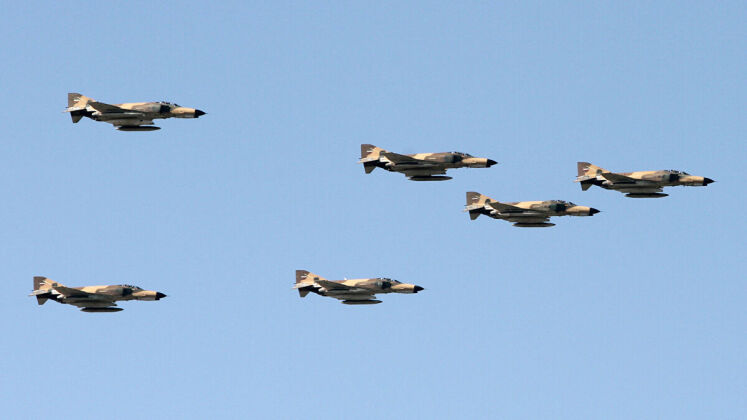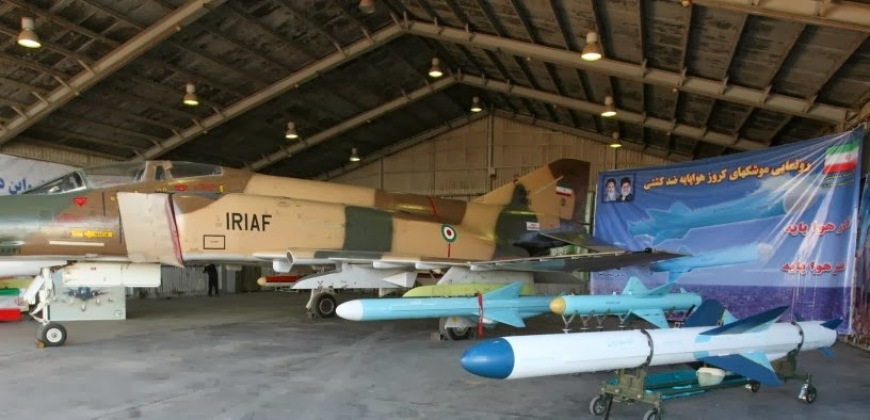For over 40 years the F-4 Phantom third generation fighter has formed the backbone of the Iranian Air Force, with the Vietnam War era twin engine jets relied on to perform a number of roles for the Islamic Republic’s defence ranging from air superiority to reconnaissance and in recent years even strike missions against terror groups in neighbouring Iraq. Six F-4 squadrons are currently operational including a single reconnaissance squadron with an estimated 6-10 RF-4E jets and five combat squadrons which between them deploy an estimated 62-66 F-4D and F-4E fighters for an average of approximately 13 per squadron. While old, the Phantoms are heavier, faster and can operate from higher altitudes than rival platforms such as the United Arab Emirates’ F-16E Fighting Falcons and and United States Navy’s F-18E Super Hornets, and with extensive indigenous modernisation including the integration of modern sensors, electronic warfare systems, and armaments they can present a credible threat. Although the F-4E, the most widely serving variant of the Phantom, was designed primarily for air superiority, Iran later acquired two F-14 and two MiG-29 fighter squadrons and more modern ground based air defences which allowed it to increasingly designate its Phantoms strike roles. These include both conventional strikes on ground targets, as demonstrated by operations against Islamic State militants based in Iraq, as well as anti shipping missions in the Persian Gulf.

For the Iranian military, the ability to threaten hostile warships in the waters of the Persian Gulf, particularly the narrow but strategically critical Strait of Hormuz, remains a key capability. Although Iran relies heavily on its ballistic missile arsenal to be able to strike enemy military facilities across the Middle East in the event of war, a growing arsenal of cruise missiles has been developed to neutralise enemy warships and aircraft carriers and thus blunt the ability of potential adversaries to launch strikes on the the country from the sea. Having extensively studied the operations of the United States Navy’s carrier strike groups in particular, the Iranian fleet of attack boats and diesel powered submarines, including state of the art Russian Kilo Class ‘black hole’ ships and a number of North Korean made platforms, are all key to keeping hostile warships at bay and thus deterring a Western attack. The Iranian military has also relied heavily on assistance from China to develop a number of cutting edge air launched anti ship missile systems. Chinese designed cruise missiles are built in Iran under indigenous designations, much like the country has taken to renaming domestically manufactured North Korean ballistic missiles. The Nasr anti ship cruise missile, for example, is a direct derivative of the Chinese C-704. With a range of 35km and the ability to approach enemy warships at very low altitudes, Iranian F-4 fighters have been modified to deploy the munitions. As each Phantom can deploy multiple missiles, and can do so far from Iranian coasts due to the aircraft’s relatively high endurance, large numbers of Phantoms armed for a maritime strike role can pose a significant threat to enemy warships. The high performance of the missile’s compensate for the F-4’s performance shortcomings.

Complementing the Nasr a second anti ship cruise missile has been indigenously manufactured for the Phantom based on a modern Chinese design. The Qader medium range cruise missile, derived from the Chinese C-802, is capable of striking hostile targets up to 200 kilometres away. Able to engage enemy targets at standoff ranges, the survivability of the Phantoms as well as the size of Iran’s maritime anti access area denial zone are both significantly improved. Iran has reportedly modernised the anti jamming technologies of these two Chinese missiles to improve their effectiveness when operating against adversaries with advanced electronic warfare capabilities. The F-4 is the primary launch platform for the two cruise missiles, and travelling at high altitudes and at speeds of over Mach 2 the aircraft can impart considerable kinetic energy onto them when launching. The Phantoms also enjoy a considerable speed and altitude advantage over any Western carrier based fighters currently in service, which could allow them to impart much more energy onto their missiles depending on whether modifications allow them to fire from high altitudes. With dozens of Phantoms in service they are set to provide a highly effective complement to the country’s other maritime anti access area denial systems.
